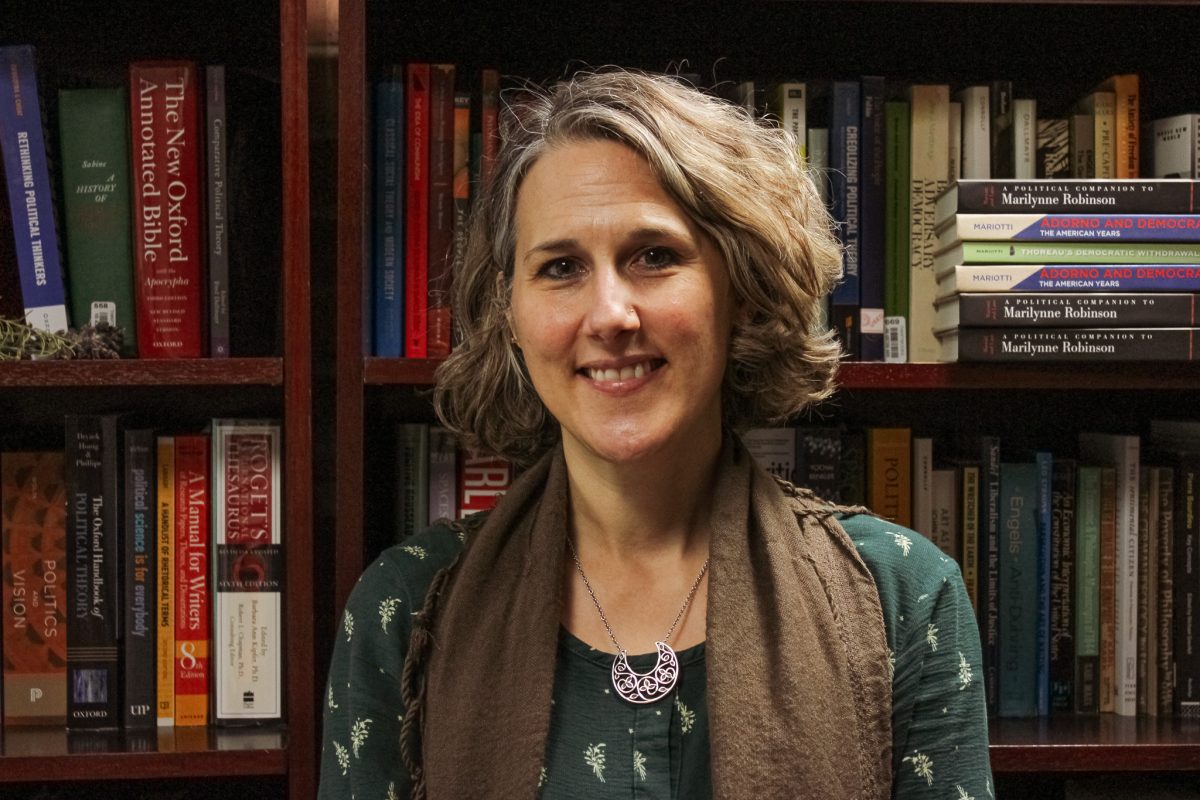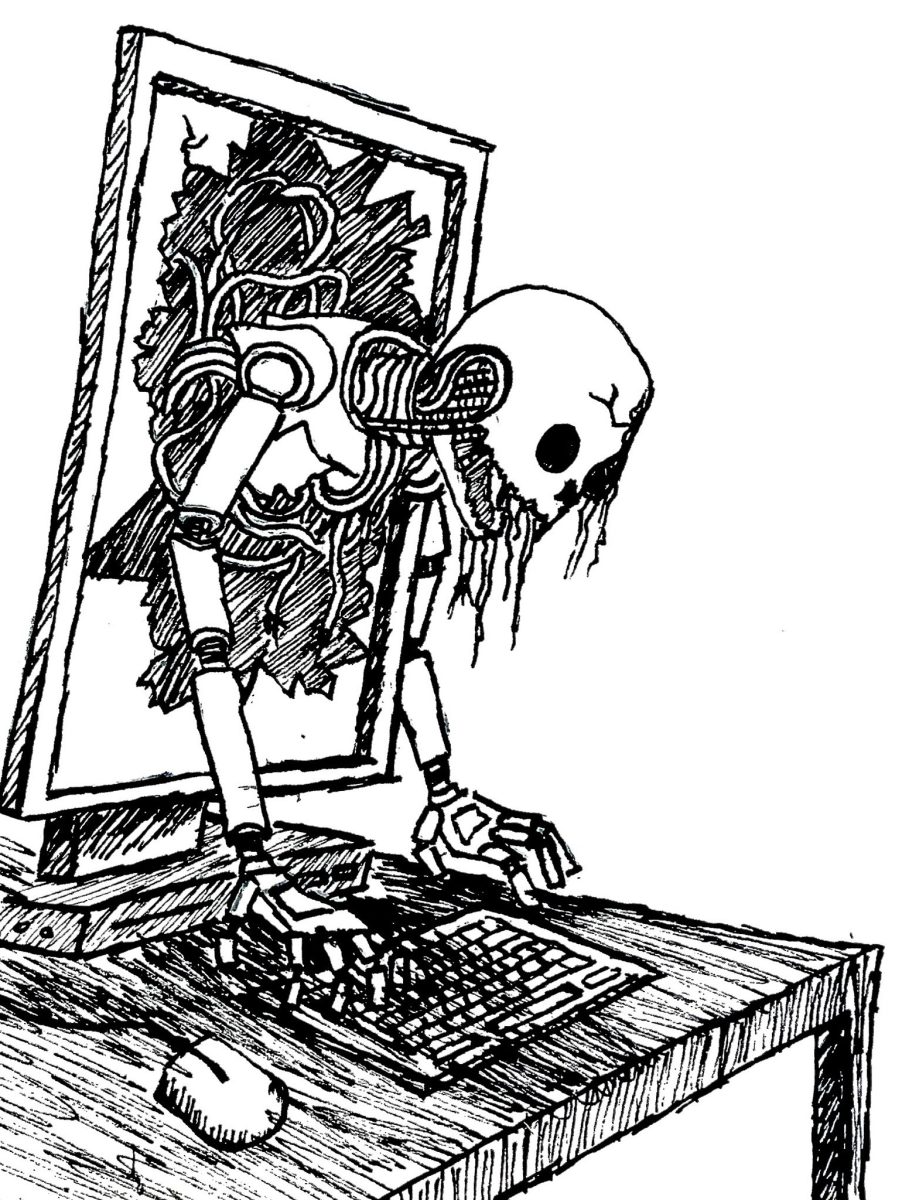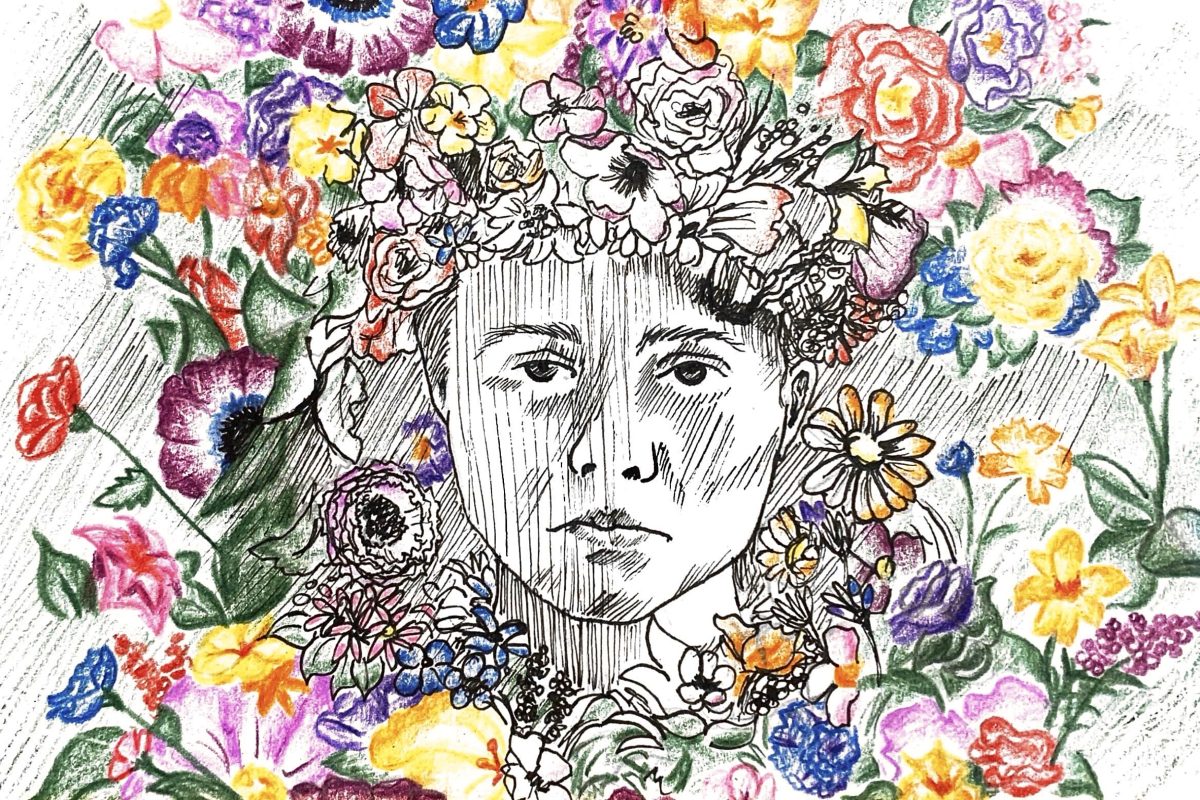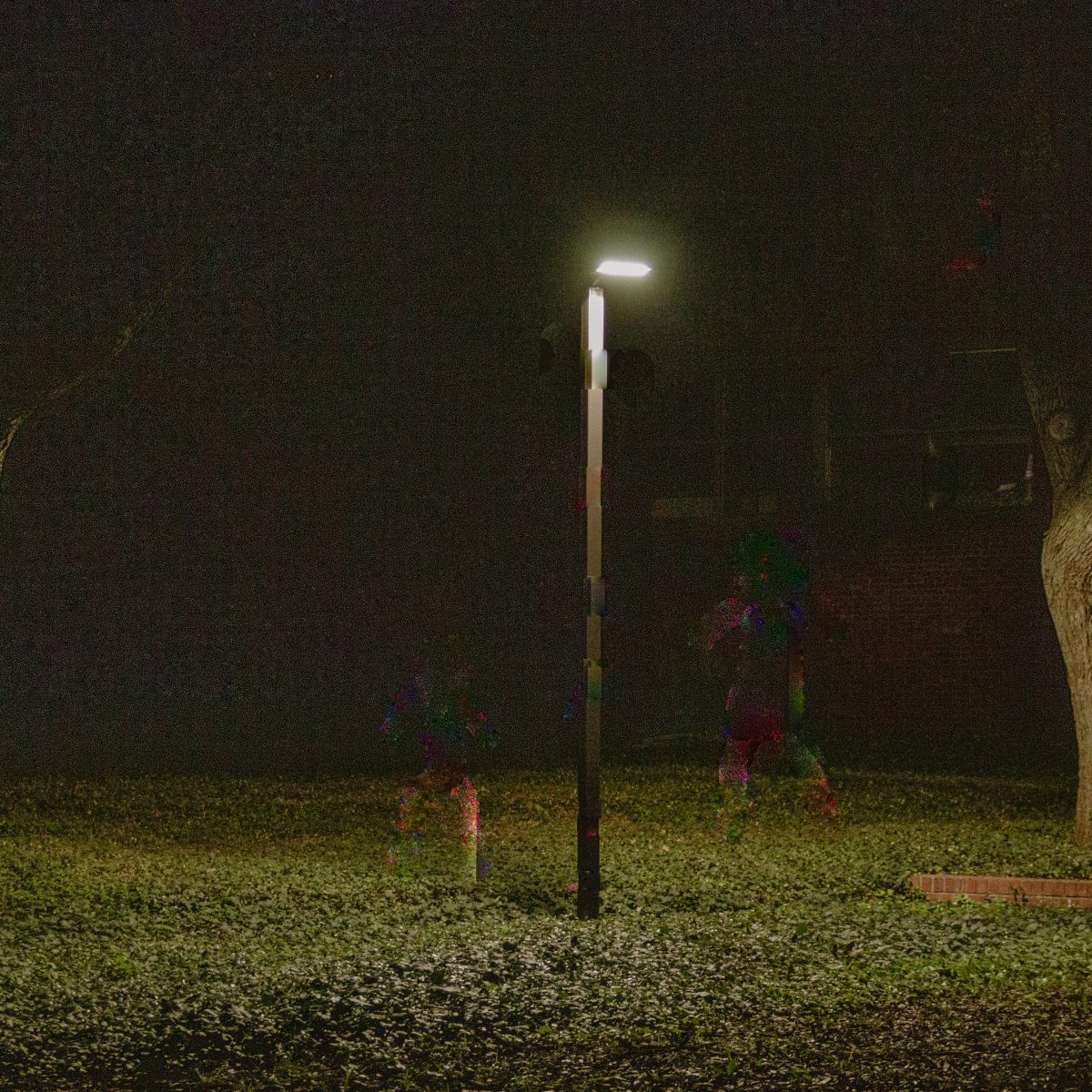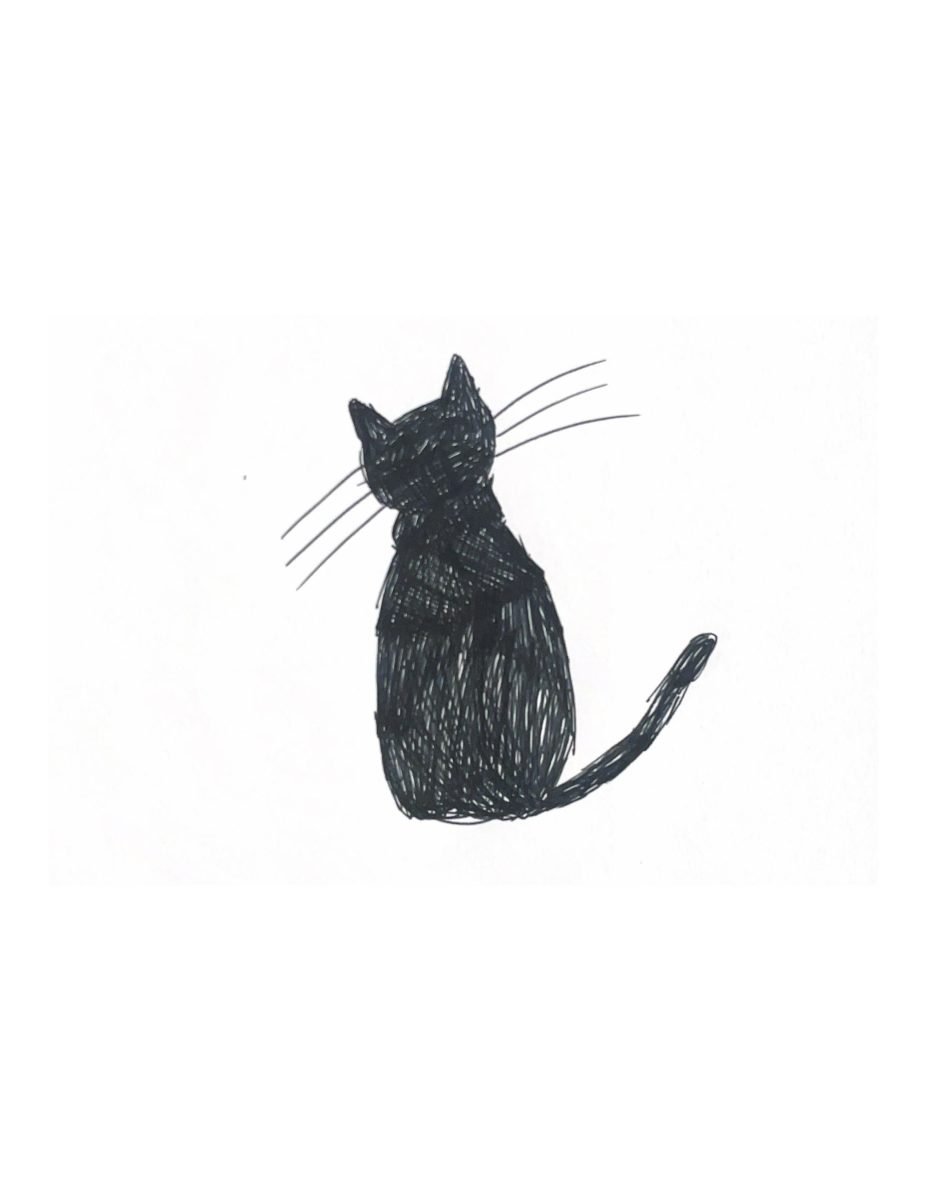Photo provided by Joshua Anaya
Over the summer, I had an awakening. I was reborn into a new person after watching the first episode of HBO’s Euphoria. Along with the casting, the neon cinematography and the relatability of the show’s content to today’s life as a young adult, I was instantly struck when I saw the ethereal makeup each of the main actresses wore each episode. The stars and glitter placed beautifully into the creases of the characters’ eyes in each scene mesmerized me in a way that makeup never really has. By the way, I totally have a crush on Jules (Hunter Schafer’s character).
Throughout most of my life, I’ve always had a keen fascination with makeup and creative presentation. Growing up with a very classy mom and grandmother, I was always there to watch when they’d get ready to attend anniversary dinners or high school reunions. Over time, I began to notice that my mom had a certain preference towards bright red lipstick and flowery Chanel perfume. I became undoubtedly fascinated with makeup, and by the time I started high school, I’d gotten pretty good at sneaking products out of my mom’s makeup drawer into my room, where I’d mimic her routine on myself.
Eventually … I was caught. My mom got home early from work one day and found me in her room wearing her favorite red lipstick. I learned one thing that day that forever stuck with me after the fact: you can’t trick your mom for as long as you think you can. She’d known that I was using her makeup for a long time because she kept running out of things she needed. Thankfully, she embraced this interest of mine and began to show me makeup tips, and occasionally, she let me do her makeup for events.
I started to watch more and more makeup videos on YouTube and Instagram for inspiration and more tips. I’ve been watching makeup videos online for a while now, but it wasn’t until about a year ago that I began to wear makeup openly. Euphoria hadn’t come out yet, so the majority of my inspiration for the looks I wore came from popular makeup artists like Jackie Aina, Charlotte Tilbury and Pat McGrath.
In order to qualify myself to write this, I watched numerous videos and read various articles about the origins of Euphoria looks. Alexa Demie (the actress who plays Maddy on the show) posted a picture set on Twitter of her makeup inspiration for her character, which included a shot of Nina Simone wearing a dramatic winged-eye look with rhinestones. Demie, in a YouTube video, also stated that the on-set makeup artists were very collaborative and took substantial inspiration from editorial looks worn by 90s fashion models. This proves that Euphoria makeup is not new.
Beginning in the 1920s and still standing to this day, the New York ballroom scene (notably recounted by FX’s Pose, which is also an incredible show) is an integral part of the inspiration where the “editorial” makeup style seen in Euphoria was first popularized. The ballroom scene describes a subculture in cities like New York and Baltimore, where people compete on runways for trophies, prizes and honor for their respective houses. The ballroom scene has historically been an opportunity for safety and shelter for black and brown LGBT+ youth, especially those who have been kicked out of their homes for their identities. The houses are led by “mothers” and “fathers,” who are often older members of the ball scene. Numerous houses compete in the balls by performing “walks” characterized by glamorous gowns, “voguing” and makeup that closely resembles what we see in Euphoria today. In addition to providing a safe space for marginalized communities, balls have served as a way to “undo gender” by providing a safe and exuberant haven for gender non-conforming performance and existence.
The way that Euphoria recently used this style of makeup serves as an homage to the black and brown queer icons that dominated the ballroom scenes of the past, by bringing it into the present. By rebranding these aesthetics which were originally created by queer and trans people of color for today’s generation, Euphoria empowers LGBT+ youth to express themselves openly by wearing makeup and otherwise challenging society’s narratives around gender expression. If such a show were to exist in the early 2000s, younger Joshua may not have been as afraid to freely express himself in the ways he still fears to this day.
Though there is still a long way to go, I think this new wave of LGBT+ representation in widely-admired media is a good thing, especially for the new generation of LGBT+ teenagers and young adults who can perhaps see some of themselves reflected in the show’s characters, like I did. It may just be a show, but the gratitude I feel for Euphoria is endless. Not only do I have more inspiration to try unconventional makeup looks, I also have a greater confidence in myself and my community.


